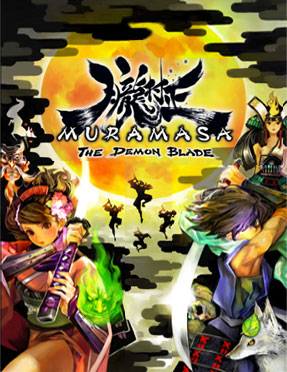Pure, Gorgeous Action
Games often try to be an encompassing medium. So many titles attempt to have as much for the player to do as possible, with vehicle sequences, dialogue trees and time-wasting fetch quests. Variety can be wonderful thing, but when the whole is only connected parts, it dilutes whatever product was there to begin with. In this sense, Muramasa: The Demon Blade is the most "pure" game I have played in a long while.
To say the game is cohesive isn't entirely true; It's just simple. Its feature set is one thing that does multiple things. Combat is the center of the game, and everything else is built around it. Everything that is not fighting is there to help you fight better or to offer a better fighting experience.
The combat itself feels like a cross between a 3D action game (think Ninja Gaiden or Devil May Cry) and a 2D fighting game (specifically Capcom's VS. Series). You come across encounters while running through a map to get your next destination, and then, well, it's on. The controls are relatively simple, but the one thing I thought was odd at first was jumping with up on the analog stick instead of with a button. Two hours in, however, it felt completely natural, and I understood Vanillaware's decisicion: when the combat in a game is this fast, pressing an extra button is far too slow.
Combat is very much button-mashy. There were very few times were pressing the A button was to my disadvantage. What gives the combat its feel, and its depth, is the immediate amount of control you have over your character. If the enemy you have caught in an air combo dies, you can immediately point the control stick down mid-combo and stab the enemy below you. If you're surrounded, you can switch directions effectively enough to keep both sides of enemies at bay.
The part where it starts to feel like a fighting game is in the impact of hits. Striking enemies produces the same sort of slow-down that you'd get from landing a hit in a fighting game, and to someone who's played their share of them, it feels good. Blocking and attacking are assigned to the same button, which at first sounds confusing, but what makes this simple is that they're both the same exact action; if an enemy throws a projectile at you during a combo, you'll automatically block it with that attack.
This may sound like it makes the game too easy, but there are many things that make add a certain amount of strategy to the button mashing: Every time you block an attack you're sword's health meter decreases, and when that runs out, the sword breaks (which means it does half damage and you can't block with it). To counteract this, you must constantly switch between the three swords you can equip, which vary in special attacks and in weight (long swords usually do more damage but are slower, etc.).
Also, if you find the game too easy, you can always change the difficulty whenever you're not in combat, but be aware that Shura (Hard) is akin to going from Medium to Expert in Guitar Hero, with Shigurui (Perfect) mode unlocked if you can manage to beat hard mode. In Shura, you'll have step your strategic game up a couple of notches to survive, to say nothing of Shigurui.
When you're not fighting regular enemies, you'll engage a Metroid-style back-and-forth trek across beautifully drawn landscapes. You'll begin to see some of the cracks in animations (especially in story sequences) that begin to key you in as to how Vanillaware was able to do something like this on the Wii, but it doesn't change the fact that the game is constant eye-candy. The characters, snow-capped mountains, rainy forests, and Japanese battlefields are all gorgeous enough to stop and take a look at on the way to the next boss.
You can wander through these areas as much as you like, but the game keeps you on the straight-and-narrow if you're easily lost. You'll have a point on the map you'll need to get to (there's a flag to point you in the right direction), you'll fight a boss, get a barrier-breaking sword, then break that barrier and move on the next boss. You're free to find secret items (and bosses), but you won't have much to do otherwise.
As to what else you could be doing, there are some RPG-lite elements to make use of. Shops are strewn about the maps, and you can purchase healing items, food, and items that heal a sword's health and teleport you to save points. You level up as you fight enemies, but I found that there wasn't that much of a need to grind. Levels come quickly, and I reached level 60 with both characters in just 18 hours, which is about as long as it took me to play through the game the first time through.
You'll be fine if you just play through the game once, but the game does reward multiple play-throughs. Both of your characters have interesting enough stories that you'll want to back through them to unlock their second and third endings. The story sequences are disjointed and sterile, but the plot is nonetheless intriguing. You'll also have access to more swords after you beat the game, as well as the ability to fight one character's bosses with the other. If most of this seems pointless to you, though, I woudn't bother with the end-game extras.
Muramasa doesn't need any of the "It's on the Wii" qualifiers. The game would look great on any platform, it's able to keep the one thing it tries to do (combat) entertaining for as long as it needs to, and it doesn't wear out its welcome with extra padding or features.The Wii may not as many "AAA" titles as the competition, but this is definitely one of them.
